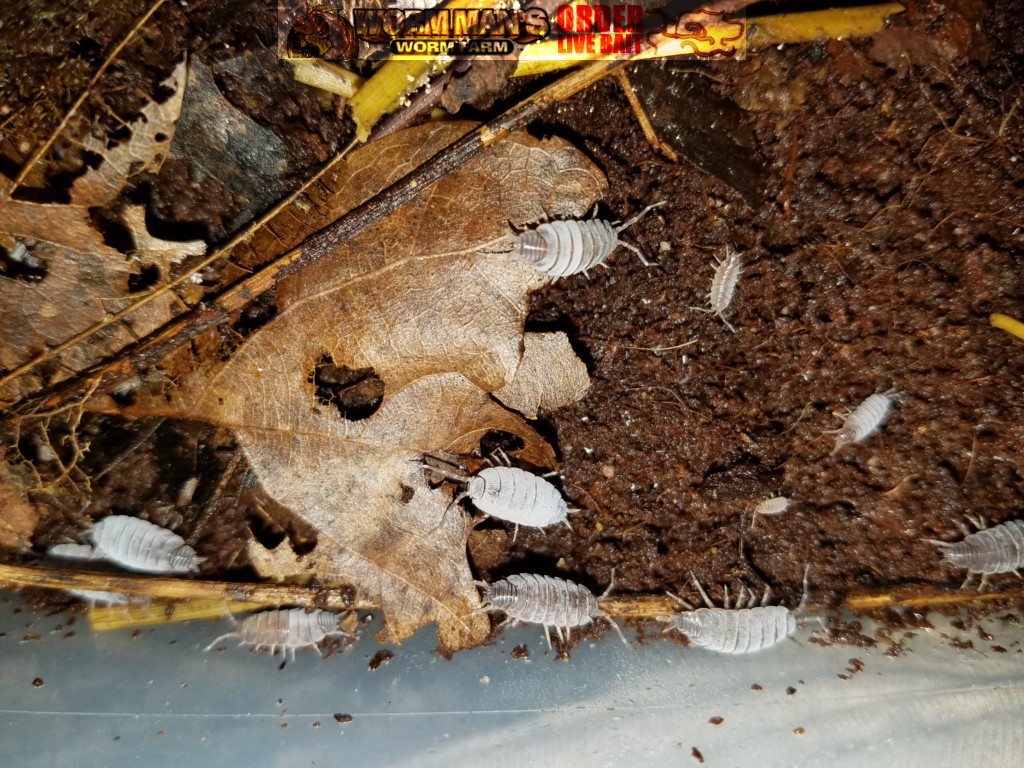
Flowery Blue Isopods
Porcellionides floria
Porcellionides floria are a fast growing, fast breeding isopod that will rapidly fill their enclosure with young. Keep segregated from other isopods because they will out-compete others for food because of their fast breeding. They are easy to care for and eat many different types of dried leaves, grasses and foods. They are fond of Oak Leaves, Alfalfa hay and fish flakes but will also eat many different food scraps.

They are native to the southern United States but have been found as far north as New Jersey. They can be found in various warm places around the globe due to Human transport. They are often found under rocks heated by Sunshine or in warm compost heaps. The range from powder blue to light orange in color and we are currently working on a white variation. They have waxy grains on their exoskeleton that makes them look like they are covered in a soft blue powder.
Food: Fish flakes, alfalfa grass, dried leaves,
Brewer’s yeast and fruit and vegetable slices are happily
eaten by Porcellionides floria.
Sprinkle some Brewer’s yeast in a corner and mist it. The Isopods will eat that fungus. Remove any food items that mold other than the fungus from Brewer’s Yeast.
Temp Requirements: They like it warm. 75 to 85 degrees
will keep them breeding for you.
Enclosure: Any container with slick sides. A glass
aquarium, plastic bin or a shoe box with a lid are great
containers to start with. Drill holes in any container
that has a lid. Airflow is important.
Breeding: They will breed quickly and readily and
will often breed prior to reaching full size.
Ease of Care: Easy
Substrate: Coconut Coir Bedding, Peat moss or sterilized
leaf litter work well.
Humidity: Humid
Size: They get to be about a quarter in long.
Place of Origin Mediterranean.
Identifying Characteristics: Elongated, thin body with a powdery coating in blue or even orange. The blue variation is often confused with
Powdery Blue Isopods.

